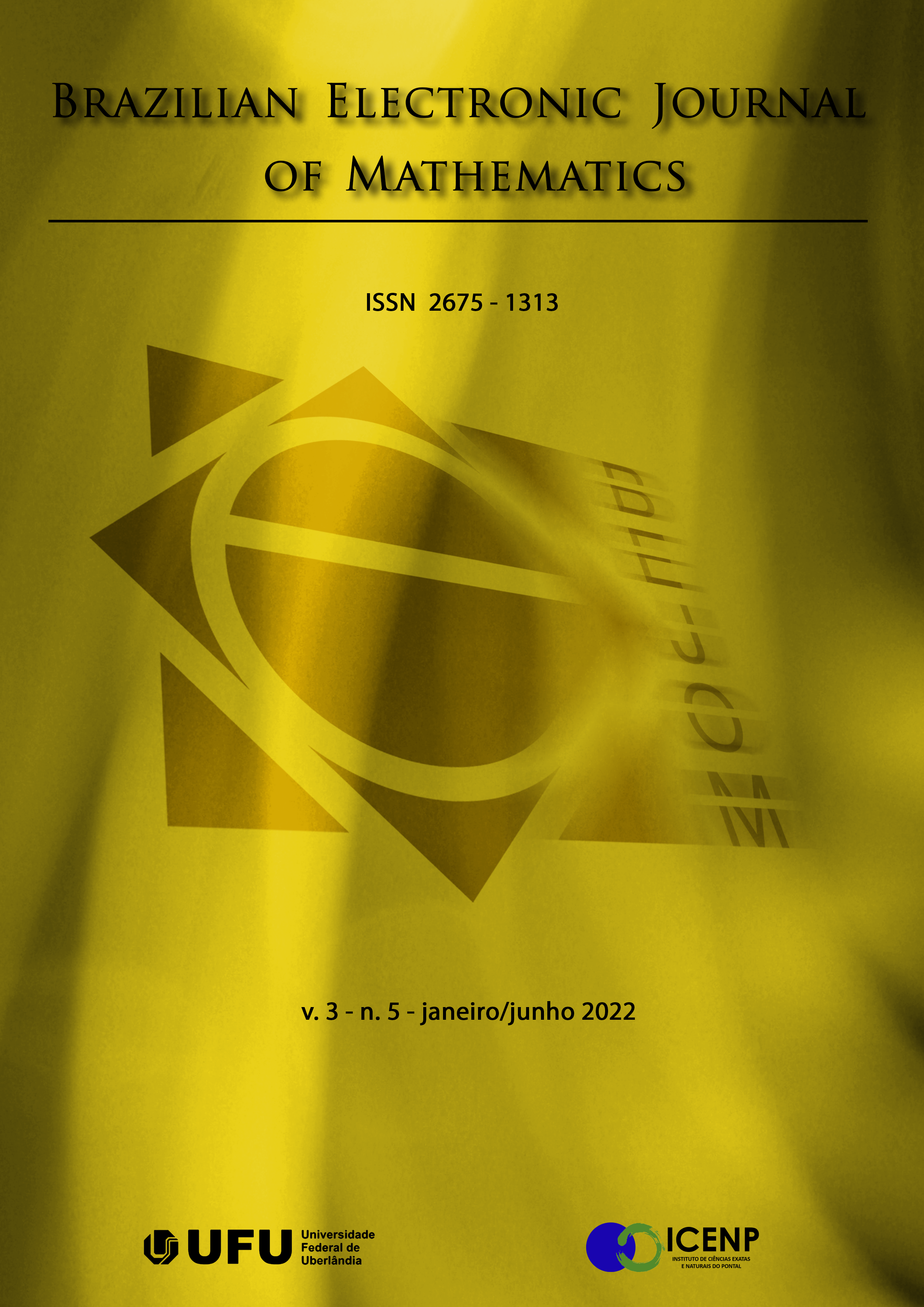Matrizes e partições de inteiros
DOI:
https://doi.org/10.14393/BEJOM-v3-n5-2022-63097Palavras-chave:
Partições de inteiros, Representações matriciais, IdentidadesResumo
Apresentamos, neste trabalho, um estudo sobre as novas representações matriciais de partições introduzidas em 2011, ferramenta promissora dentro da teoria das partições de inteiros. Todas as representações discutidas aqui consistem de matrizes de duas linhas, porém variam quanto as suas condições definidoras. Trazemos exemplos de representações para partições irrestritas e algumas com restrições, em particular as partições que compõem a primeira e a segunda identidade de Rogers-Ramanujan. Buscamos evidenciar algumas das principais utilidades das representações matricias na teoria e passos seguintes que podem ser dados em trabalhos futuros sobre o tema. Finalizamos com resultados sobre representações matriciais relacionadas a Identidade de Schur.
Downloads
Downloads
Publicado
Edição
Seção
Licença
Copyright (c) 2022 BRAZILIAN ELECTRONIC JOURNAL OF MATHEMATICS

Este trabalho está licenciado sob uma licença Creative Commons Attribution-NonCommercial 4.0 International License.
- Os artigos publicados a partir de 2025 são licenciados sob a versão CCBY-4.0. Ao enviar o material para publicação, os autores estarão automaticamente, concordando com as diretrizes editoriais do periódico e assumindo que o texto foi devidamente revisado. A submissão simultânea de artigos a outras revistas é proibida, e, é também proibida a tradução de artigos publicados no periódico para outro idioma sem a devida autorização.
- Os artigos publicados em anos anteriores a 2025 são licenciados sob a versão CC BY-NC 4.0.









